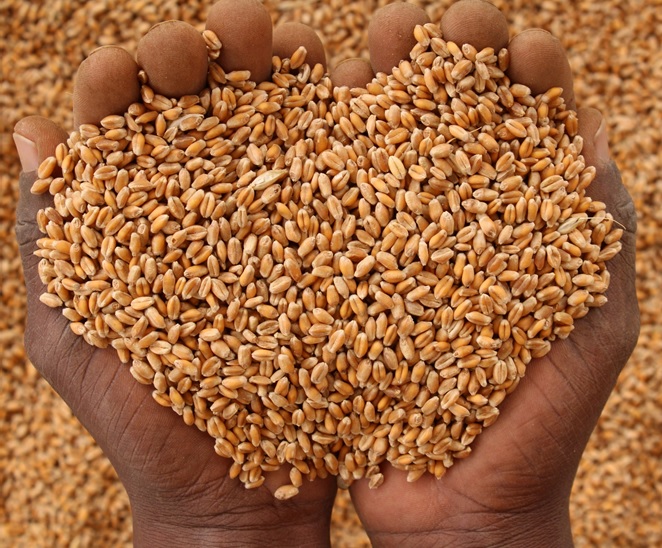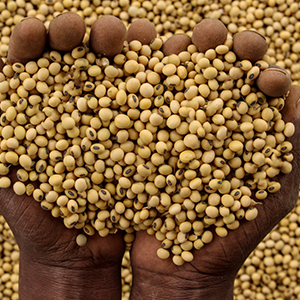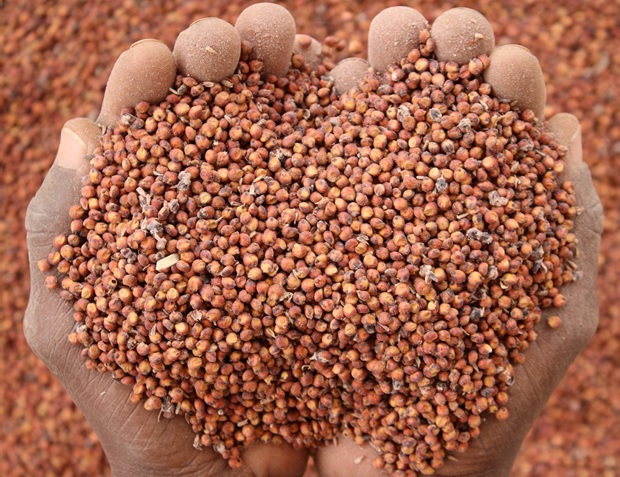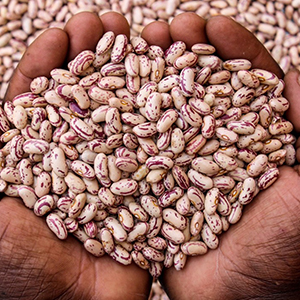The Seed Co technical team (comprising of breeders, agronomists and seed inspectorate) is assessing the standing crop performance of Seed Co hybrids grown by farmers in the 2016/17 summer season. The bumper harvest this year (which is at this point certain) will increase maize production to self-sufficiency and surplus levels for import substitution. The standing crop assessments is the preliminary round of assessments for possible farmer participation in this year’s Seed Co 10+ tonne clubs as well as the upper limit/open limit clubs.
This week we give you a narrative of a bumper harvest testimony by a Mazowe commercial farmer (Mr. and Mrs. Pfachi) of Sub Division 38 Fairview farm, Mazowe – a happy beneficiary of government’s 2016/17 Season’s Command Agriculture Programme.
The standing crop at Mr and Mrs Pfachi’s farm is a sure and certain case of bumper harvest achieved through principled and well calculated agricultural practices, top among them, the application of agricultural lime after soil analysis and timely planting, optimum population densities and so on…what we technically refer to as Good Agronomic Practices (GAPs). The narrative (in point form) will highlight the importance of adopting the GAPs principles as a proven and sure way to improve productivity levels and returns per investment.
Preparations and Land preps
- Soil types: Red and black clay soils with a clay content of 40%
- Soil sampling and analysis was done around August 2016 by the DR&SS
- An average of 932kg/ha of Calcitic Lime was applied by a lime spreader on planting day
- The rates and the liming agent (Calcitic Lime) were determined by a soil analysis which the farmer does religiously after every 3 years.
- The farmer carried out conventional tillage procedure of deep ploughing followed by double discing. Discing and rolling was carried out concurrently and after lime was applied.
Crop Establishment and crop management
- Varieties: Seed Co SC727 and SC719 (late maturing hybrids) with potential to yield up to 18 tonnes/ha
- Monosem planter G4 plus (4 row) with an 18 hole plate was used and set at 90cm inter-row, 22cm in-row and 350kg/ha basal fertiliser.
- Seed rate: 50 000 kernels/ha of SC727 and 24.7kg of SC727 at 90cm x 22cm
- Target population: 50 500 plants per ha
- Final achieved stand: 49 700 (98.4% germination and emergence)
- Dates of Planting: 14-18 November, 2016
- The crop was established with irrigation (30mm using rain guns with adjustable nozzles)
Fertilisation:
- Basal dressing 350kg/ha (Maize Fert (7:14:7)
- Top dressing: 350kg/ha (AN (34.5%), 2 splits at 4 Weeks After Crop Emergence (WACE) and then at 8 Weeks After Crop Emergence (WACE) before tasseling using fertiliser applicators
- Weed control: pre-emergence herbicides, Atrazine at 3l/ha in combination with Metalachlor at 1.5l/ha were sprayed after planting
- Because of high weed pressure, the farmer came in with a post-emergence herbicide combination of MCPA at 0.5l/ha and Metribuzine at 0.15l/ha, followed by full cover sprays of Nicosulfuron at 50g/ha and spot sprays of Halosulfuron at 45g/ha at 4 WACE (before the first top dressing)
- Some spot sprays of Stellar Star at 1l/ha were also applied before top dressing. The intention was to top dress a weed free crop to reduce (weed-crop) competition and maximise on fertiliser investment.
- All the inputs were supplied through GMB Concession Depot (District command Centre)
Challenges faced
Fall army worm
It was the biggest challenge the farmer encountered during the maize growing season. The farmer as a norm had to scout his fields at early stages of the crop and for the pest and a spraying decision was made at 3 WACE. The farmer sprayed 0.35l/ha of Karate Zeon mixed with other pyrethroids through the funnel of each maize plant. The intention was to increase contact with the pest.
High weed pressure
Because of prolonged wet periods, weed pressure was very high during the growth stages of the crop and the farmer had to come in with a post-emergence concoction in addition to a strong pre-emergence concoction applied at planting.
Landholding and farmer’s intention
The farmer’s intention and capacity was to plant 120ha of maize and 50ha of soya bean but landholding and arable land size were a limiting factor.
Expected yield
The farmer expected a bumper yield of 15 tonnes/ha on average with some blocks even being expected to break records for the two varieties.
“Some blocks will go beyond 17 tonnes per ha for sure and I think we will top the Seed Co elite ten tonne + club this year”, the ever smiling Mr. Pfachi said. “We want to even participate in the Upper limit Club as well,” Mrs Pfachi added. The farmer thanked initiatives by the government such as Command Agriculture Programme which are upscaling farmers’ capacities to improve productivity levels and national grain production.
Plans for the coming summer season
- To increase maize hectarage to 150ha if land can be available
- To increase Soya hectarage from the current 20 to 50.
Meanwhile, the farmer had already cleared aeration strips/corridors to hasten maize crop drying down, targeting to harvest in May/June.
The farmer held hosting a field day on the 28th of April, 2017 where all commercial, A2 and A1, farmers from Mashonaland Central and beyond are cordially invited to witness and learn about the crop varieties and the end fruits of Good Agronomic Practices (GAPs). Choosing a variety contributes 15-20% to the success story of the farmer and GAPs contribute 80% to the same.
Parting Shots
GAPs is a topline story which we strongly recommend our farmers to follow religiously. We also encourage commercial farmers to come for a big field day at Rattray Arnold Research Station in Shamva on the 5th of April to learn more about GAPs and more.
John Basera +263 772 413 184/john.basera@Seed Cogroup.com
Dr. Gorden Mabuyaye +263 772 132 767/ gorden.mabuyaye@Seed Cogroup.com
Author: John Basera and Gorden Mabuyaye
 Zimbabwe
Zimbabwe Seed Co Group
Seed Co Group Botswana
Botswana Kenya
Kenya Malawi
Malawi Nigeria
Nigeria Tanzania
Tanzania South Africa
South Africa West & Central Africa
West & Central Africa Zambia
Zambia




